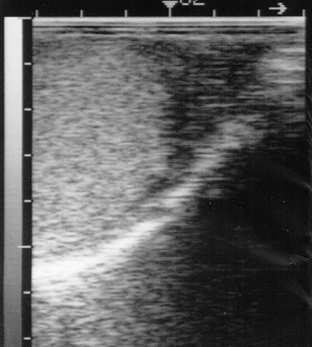CHAPTER 27The Epididymis
GROSS ANATOMY
The epididymis is a single tubule that connects the efferent ductules to the vas deferens and plays important roles in sperm transit, maturation, and storage. The structure identifiable grossly as the epididymis contains the efferent ductules, the highly convoluted epididymal tubule, and the surrounding connective tissue. The epididymis is conventionally divided into three contiguous regions based on gross appearance: the caput, the corpus, and the cauda epididymis. The caput epididymis extends over and is firmly attached to the cranial pole of the testicle. The corpus epididymis lies horizontally, dorsal to the testicle and lateral to the spermatic cord. The cauda epididymis is firmly attached to the caudal pole of the testicle by the proper ligament of the testis and to the parietal vaginal tunic by the ligament of the tail of the epididymis, both of which are remnants of the fetal gubernaculum (Figure 27-1).
ULTRASTRUCTURAL ANATOMY
Ultrastructurally, the proximal caput actually contains 13 to 15 coiled efferent ductules. The efferent ductule epithelium comprises ciliated and nonciliated pseudostratified columnar cells.1,2 The efferent ductules fuse to form the epididymal tubule in the midcaput region. The transition from efferent ductule to epididymis is marked by the disappearance of ciliated cells and a dramatic increase in the epithelial cell height. The proximal epididymis has a thick epithelial lining and a narrow star-shaped lumen. Distally the epididymal epithelium becomes gradually lower, and the lumen widens and contains densely packed spermatozoa. In the cauda epididymis the mucosal layer forms folds that protrude into the lumen. A thin layer of longitudinally oriented smooth muscle cells surrounds the caput, corpus, and proximal cauda. A thick smooth muscle layer surrounds the distal cauda.
The most abundant cell type in the epididymal epithelium is the principal cell, which exhibits prominent vacuoles and apical microvilli typical of secretory and absorptive cells.2,3 Less common basal cells and intraepithelial leukocytes are also present. Throughout the epididymis, epithelial cells are connected by tight junctions, which form a blood epididymal barrier.4
FUNCTIONS
The functions of the epididymis include spermatozoal transit, concentration, maturation, protection, and storage. In stallions, sperm cell transit through the epididymis lasts on average 7.5 to 11 days.5 Spermatozoa are concentrated as testicular fluid is resorbed in the efferent ductules and proximal cauda epididymis.1,6 Spermatozoa are immature after testicular development but become capable of progressive motion and fertilization by the time they reach the terminal epididymis. Changes occurring during maturation include enhanced chromatin cross-linking, redistribution of membrane proteins, and alterations in the activity of ion pumps. After maturation, spermatozoa are maintained in a protected, quiescent state by the luminal environment and cool temperature in the cauda epididymis. Approximately 87% of the extratesticular spermatozoa are in the epididymis, 66% in the cauda, and 20% in the caput and corpus; 13% are in the vas and ampulla.5 In the stallion, the cauda holds approximately 66% of all extragonadal spermatozoa. The number of spermatozoa available is correlated with testicular weight and daily sperm output. During ejaculation, smooth muscle contracts under sympathetic control and propels sperm into the vas deferens. The epididymis may also function in removal of abnormal spermatozoa and seasonal changes in sperm output in the stallion. Spermatophagy occurs in the efferent ductules and possibly the epididymis.1
In the stallion the activities of the epididymal epithelium and their effects on spermatozoa are areas of active research. One hundred seventeen proteins are secreted over the length of stallion epididymis, with maximal protein secretion occurring in the distal caput epididymis.6 Some proteins are present in equal concentration along the length of the tubule, whereas others are present only in discrete regions, creating multiple microenvironments in the epididymal lumen.
Stay updated, free articles. Join our Telegram channel

Full access? Get Clinical Tree



